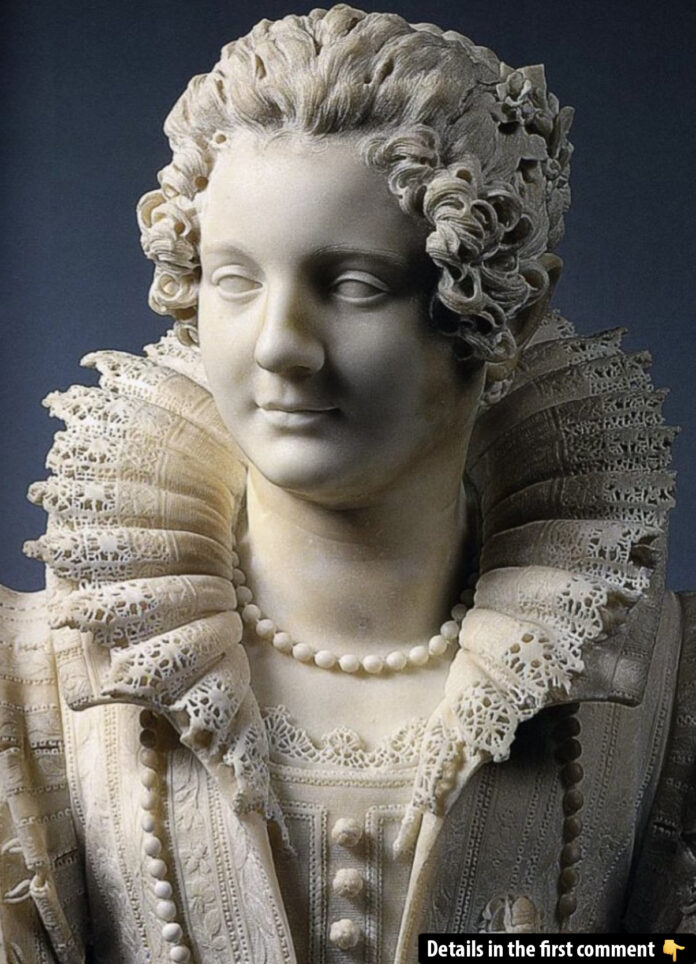The Baroque period was an age of artistic grandeur, defined by dramatic, intricate, and awe-inspiring creations. While Gian Lorenzo Bernini often steals the spotlight as the era’s leading sculptor, another artist deserves recognition for his breathtaking craftsmanship: Giuliano Finelli. Though he worked under Bernini’s mentorship, Finelli carved his own path in the art world, leaving behind masterpieces that rival his mentor’s in precision and beauty. His attention to detail, especially in the bust of Maria Duglioli Barberini, is a testament to his extraordinary skill and artistic vision.
The Baroque Period: A Backdrop of Grandeur
Emerging in the early 17th century, the Baroque period brought theatricality and emotion to European art. Artists blended the classical principles of the Renaissance with a heightened sense of drama and intricacy, creating works that dazzled audiences with their realism and grandeur. Sculpture, in particular, flourished during this time, as artists sought to breathe life into stone.
![Another detailed view highlights the refined artistry of Maria Duglioli Barberini’s likeness at the Louvre. (Photo: Wikimedia Commons [CC BY 3.0])](https://mysterious.vncash24h.com/wp-content/uploads/2025/01/Another-detailed-view-highlights-the-refined-artistry-of-Maria-Duglioli-Barberinis-likeness-at-the-Louvre-Photo-Wikimedia-Commons-CC-BY-3-0-.jpg)
Explore the masterpiece of G.L. Bernini and G. Finelli: the bust of Maria Barberini – watch the video to uncover the artistry and history behind this stunning Baroque sculpture!
Giuliano Finelli: From Apprentice to Master
Born in 1601 in Torrano di Carrara, Italy, Finelli’s path to artistic greatness began with formal sculpting training in Naples. His talent quickly became evident, and in 1622, he moved to Rome, the epicenter of Baroque art. There, his skill in carving lifelike figures caught the attention of Gian Lorenzo Bernini, who invited him to join his workshop.
Under Bernini’s mentorship, Finelli honed his craft while gaining access to prestigious commissions. Bernini’s close relationship with Pope Urban VIII ensured a steady flow of high-profile projects, and Finelli played a significant role in executing many of these works. However, it was clear from the start that Finelli’s talent was distinct. His meticulous attention to detail set him apart, as seen in his ability to render even the most delicate textures in marble.
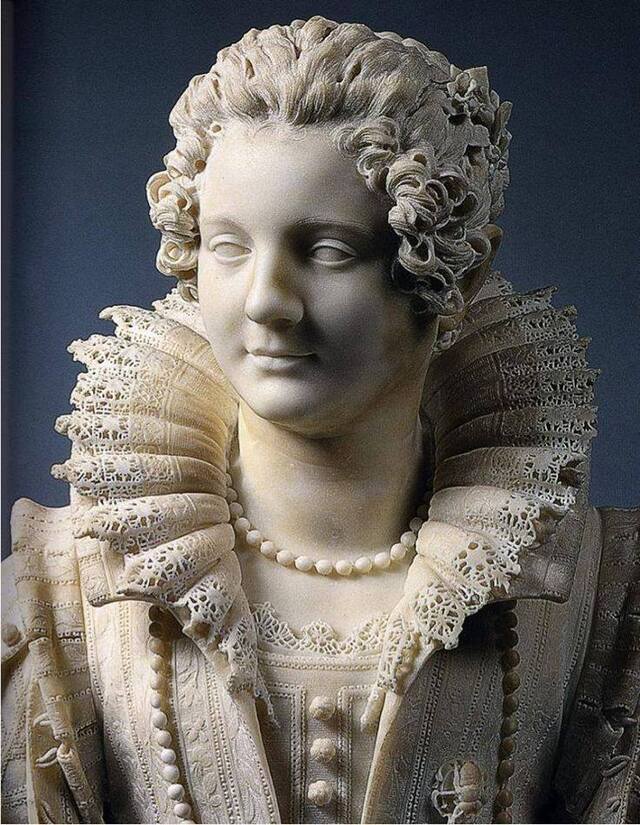
The Bust of Maria Duglioli Barberini: A Testament to Skill
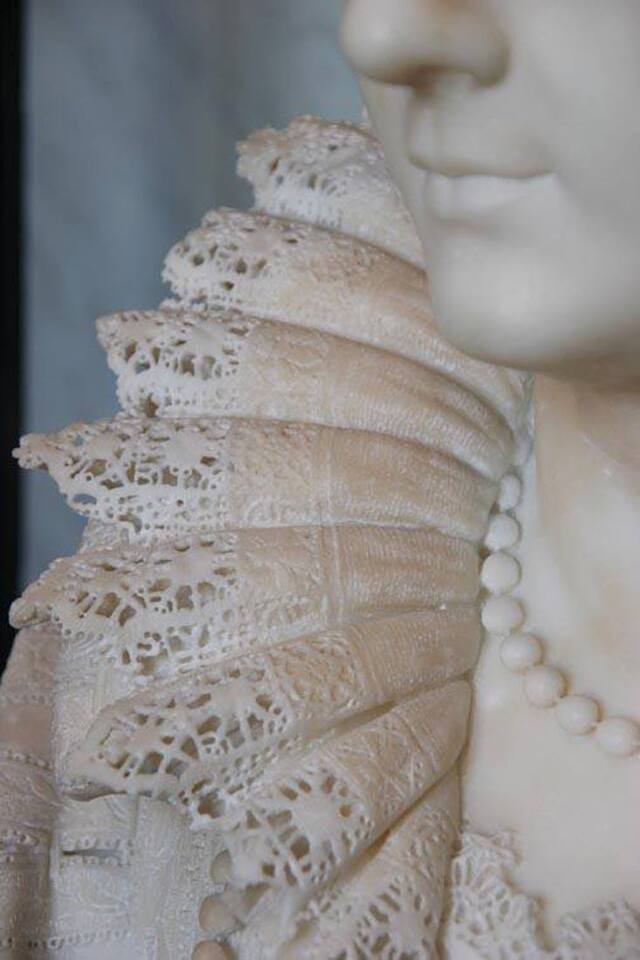
One of Finelli’s most renowned works is the bust of Maria Duglioli Barberini, the niece of Pope Urban VIII. Commissioned around 1626 following her untimely death in childbirth, the bust was intended to honor her memory. Finelli’s portrayal of Maria Duglioli Barberini goes beyond mere representation; it is a masterpiece of realism and emotion.
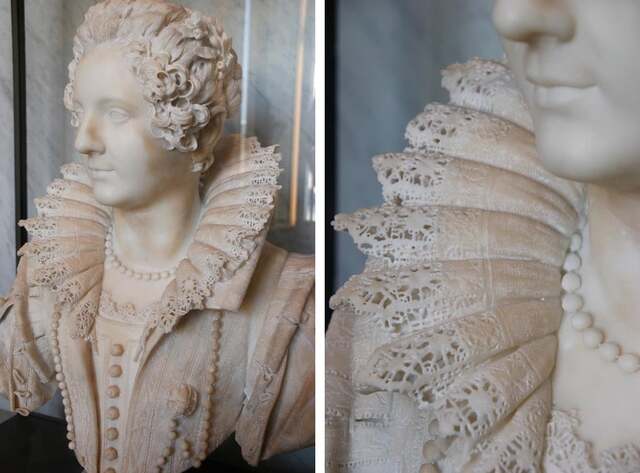
What sets this sculpture apart is the astonishing detail Finelli achieved in carving the lace of her ruff. The lace appears so delicate and intricate that viewers often mistake it for real fabric. Yet, every thread, fold, and pattern is painstakingly sculpted from marble. Even the tiny string binding the beads of her necklace is visible, a testament to Finelli’s unparalleled dedication to his craft. The result is a sculpture that not only captures Maria Duglioli Barberini’s likeness but also immortalizes the beauty and fragility of her life.
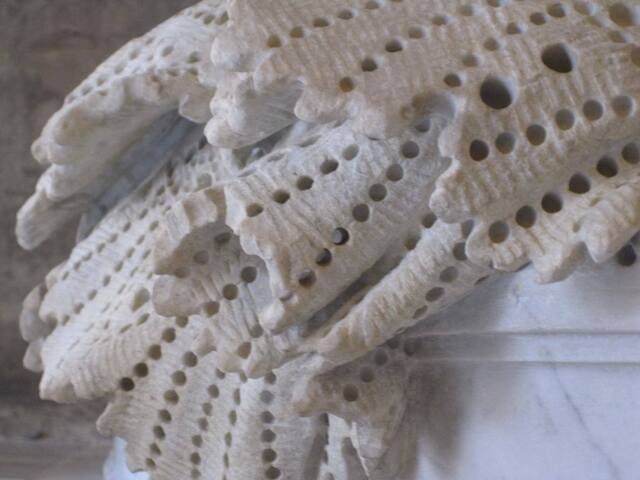
Breaking Away from Bernini: Finelli’s Independent Journey
Despite his significant contributions to Bernini’s workshop, Finelli struggled to gain the recognition he deserved. Bernini, known for his ambition and desire for the spotlight, refused to let Finelli present the bust of Maria Duglioli Barberini to Pope Urban VIII. This incident, along with Bernini’s dominance in the art world, pushed Finelli to break away and establish himself as an independent artist in 1629.
![A closer look at the same bust unveils the remarkable craftsmanship behind its intricate lacework. (Photo: Wikimedia Commons [CC BY 3.0])](https://mysterious.vncash24h.com/wp-content/uploads/2025/01/A-closer-look-at-the-same-bust-unveils-the-remarkable-craftsmanship-behind-its-intricate-lacework-Photo-Wikimedia-Commons-CC-BY-3-0-.jpg)
The Artistic Legacy of Giuliano Finelli
![The Louvre houses the bust of Maria Duglioli Barberini. (Photo: Wikimedia Commons [CC BY 3.0])](https://mysterious.vncash24h.com/wp-content/uploads/2025/01/The-Louvre-houses-the-bust-of-Maria-Duglioli-Barberini-Photo-Wikimedia-Commons-CC-BY-3-0-.jpg)
While Bernini is often credited with defining the Baroque style, Finelli’s contributions demonstrate that there was more than one master sculptor of the era. His work challenges the notion that Bernini was unrivaled, showing that Finelli’s talent was equally deserving of recognition.
The Beauty of Baroque Details: An Artistic Revelation
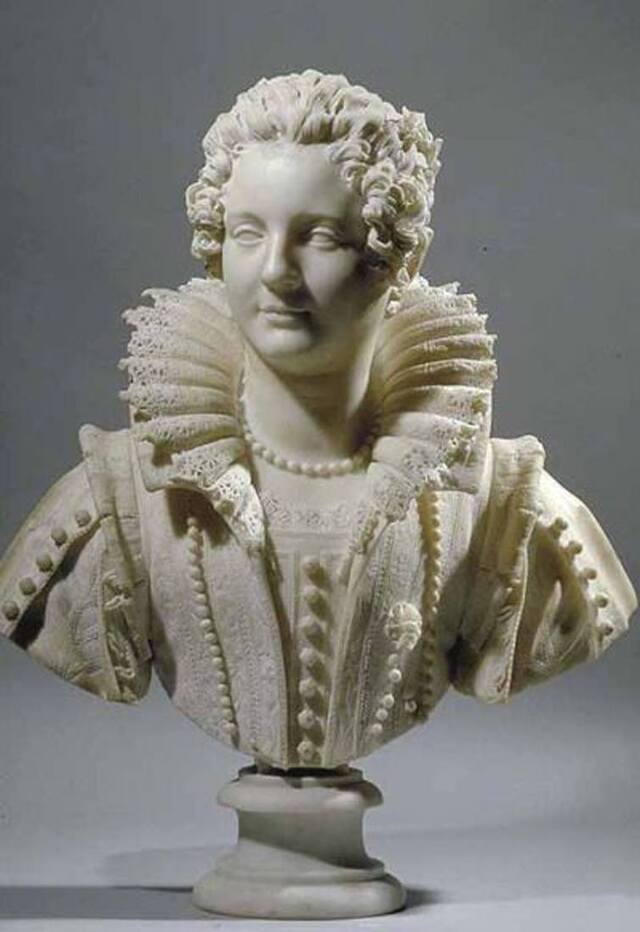
What makes Finelli’s work so captivating is his ability to transform marble into something that feels alive. The intricate details in his sculptures reflect the Baroque era’s dedication to beauty, realism, and emotion. For modern audiences, his work serves as a reminder of the skill and dedication required to achieve such artistic feats.
The lace on Maria Duglioli Barberini’s bust, for example, is not just a display of technical skill but also a reflection of the artist’s desire to capture the essence of his subject. Finelli’s sculptures invite viewers to marvel at the intersection of art and reality, where stone takes on the appearance of soft fabric, shimmering beads, and delicate skin.
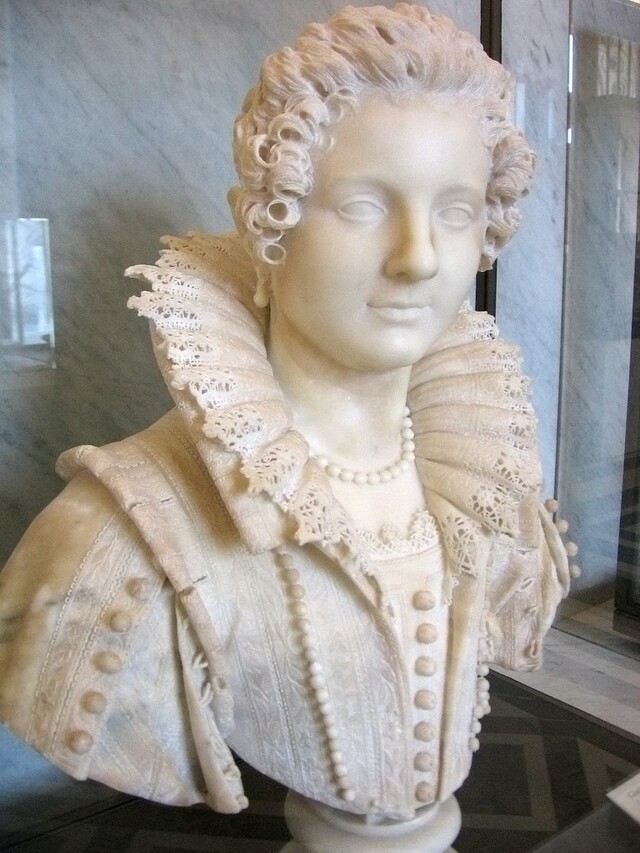
Video
Discover the beauty and meaning behind Bernini’s Apollo and Daphne in this Great Art Explained video – watch to explore the masterpiece’s intricate details and emotional depth!
Conclusion
Giuliano Finelli may not have achieved the fame of Gian Lorenzo Bernini, but his work speaks volumes about his talent and dedication. The bust of Maria Duglioli Barberini, with its breathtaking details, stands as a testament to his mastery of marble and his ability to immortalize beauty.
In a world where Bernini’s name dominates discussions of Baroque sculpture, Finelli’s contributions deserve to be celebrated. His work reminds us of the power of art to transcend time, capturing not only the likeness of his subjects but also the spirit of an era. Through his sculptures, Finelli invites us to appreciate the beauty of the Baroque period and the extraordinary skill of a forgotten master.
